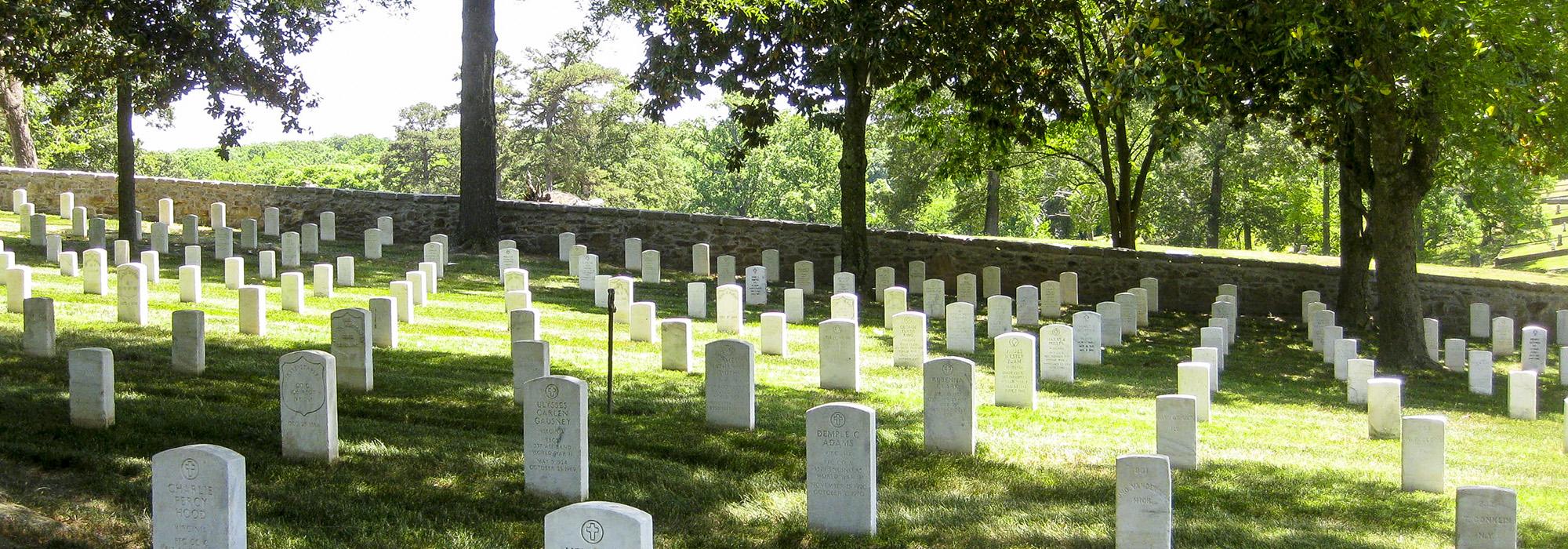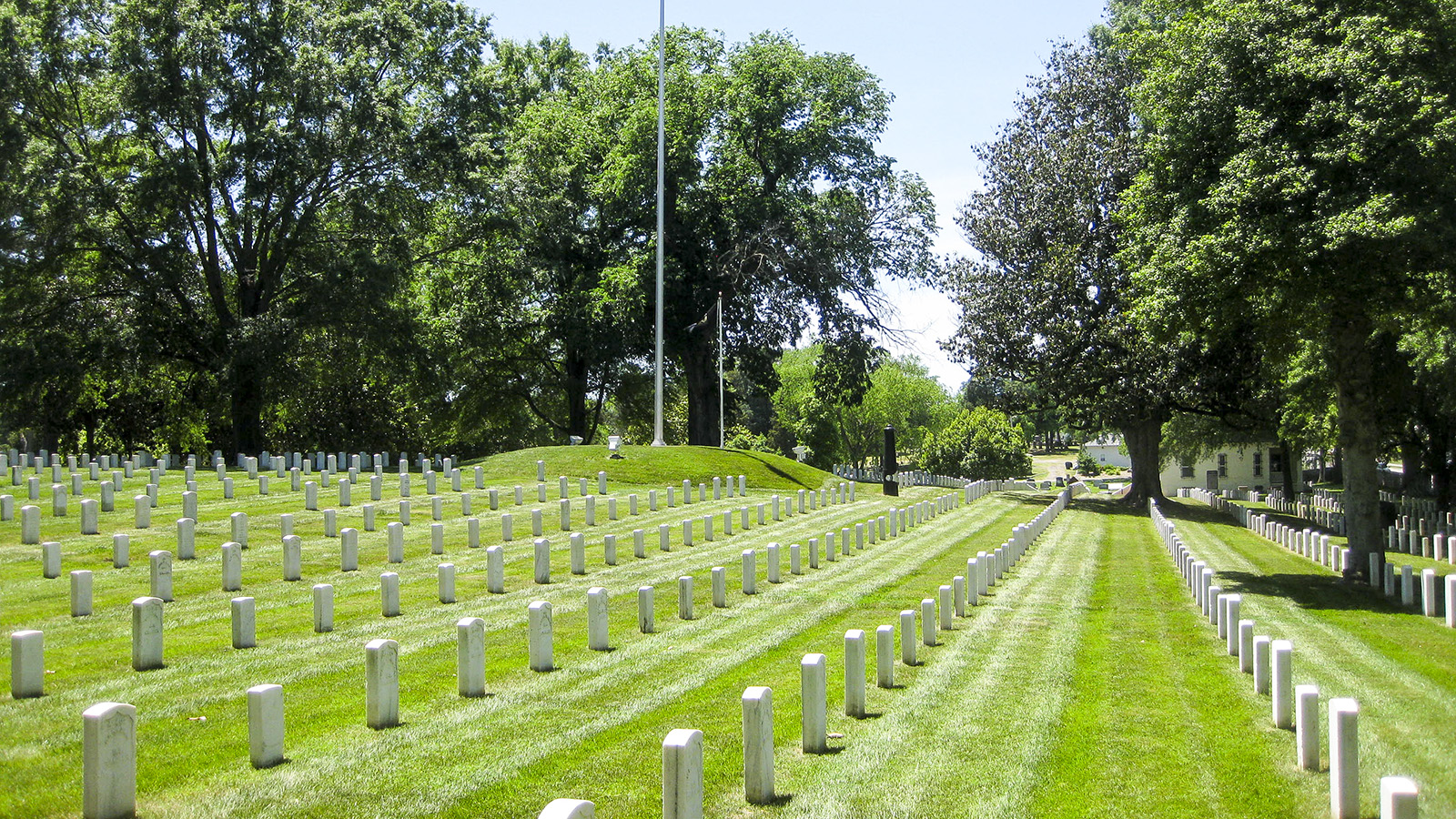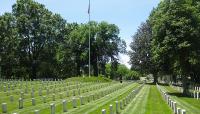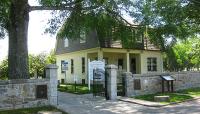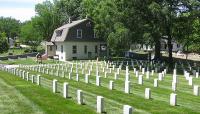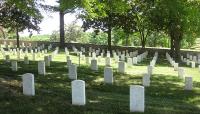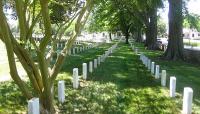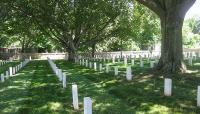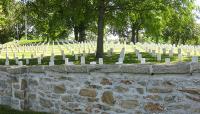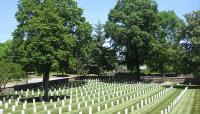Landscape Information
Established in 1866, this 2.5-acre burial ground is one of the earliest of the national cemeteries established by the federal government immediately following the Civil War. Over 1,300 Union soldiers, many of whom died of disease while being held in Danville’s Confederate prisons, were reinterred here following the war. Additional burials for veterans of the Civil War, World Wars I and II, the Korean War, and the Vietnam War continued until 1970.
The cemetery’s modified rectangular layout is divided into ten burial sections. Each grave is marked with a white, upright marble headstone. Historic landscape features include an enclosing four-foot stone wall, a wrought iron main entry gate with an adjacent stone pier and pedestrian gate. At the cemetery’s center is a flagpole sited atop a grass mound. The superintendent’s lodge just inside the entrance gate was constructed in 1928, replacing an earlier one constructed in the early 1870s. The inclusion of such a structure was a provision of the 1867 National Cemeteries Act, which standardized landscape features including headstones, perimeter walls, fencing, and superintendent’s lodges.
The numerous mature trees within the cemetery likely reflect design principles espoused by landscape architect Frederick Law Olmsted, Sr., who, in 1870, was consulted by Quartermaster General Montgomery C. Meigs regarding the design of national cemeteries. Olmsted’s recommendations to Meigs included tree plantings within the cemetery walls to create the character and quality of a sacred grove. In 1994 Danville National Cemetery was one of sixteen sites comprising a multiple property listing in the National Register of Historic Places, and a year later it was listed independently.



